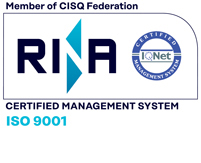Iran
IRAN’S ECONOMY CLOSES FISCAL YEAR 1403 IN RECESSION
Despite historical trends of increased consumer demand during Esfand, this year’s market failed to deliver the expected boost. The overall economic PMI, adjusted for seasonal effects, stood at 48.7—remaining below the neutral 50-point threshold that separates expansion from contraction. While this was a slight improvement from February’s 47.0, it still reflects a sluggish and shrinking economic environment.The report highlights that four of the five main components of the index—production volume, new customer orders, inventory of raw materials, and employment—registered declines. Only the speed of delivery of orders showed improvement.Production continued to fall for the fifth straight month, albeit at a slower pace compared to February. Businesses reported difficulty planning ahead due to sharp price fluctuations in raw materials, currency volatility, and limited access to financing. A rise in production costs and uncertainty about future demand have led many firms to reduce operations or halt expansion plans.The decline in consumer purchasing power, largely attributed to soaring inflation and high living costs, meant that even the traditional uptick in March demand failed to materialize. New orders fell for the 11th time this year, with the index staying well below 50—indicating ongoing contraction. Compared to the same month in previous years, the situation was significantly worse.Inventory levels of raw materials dropped more rapidly in March than in previous months. A combination of exchange rate volatility, limited foreign currency allocations, and customs delays has driven up import costs and disrupted supply chains. Many producers found it increasingly difficult to maintain optimal inventory levels, especially as domestic raw material supplies have also been constrained.The surge in exchange rates has not only raised the cost of imported materials but has also eroded profit margins, placing more financial pressure on producers. As a result, final product prices remained high throughout March, although the pace of price increases slowed slightly compared to February.Final product inventories also declined for the fifth consecutive month, a trend driven by reduced production volumes and limited customer orders. High production costs and financial constraints have made it difficult for firms to restock, while prevailing uncertainty has led many to adopt a cautious approach to inventory management.Employment continued to decline in March, reflecting the ongoing recession in both production and demand. With fewer new orders and falling output, many businesses saw no need to hire additional workers. Simultaneously, some firms actively cut back on labor costs in response to rising expenses for inputs and overhead, further weakening the job market. (ICE TEHERAN)
Fonte notizia: Iran News Daily




